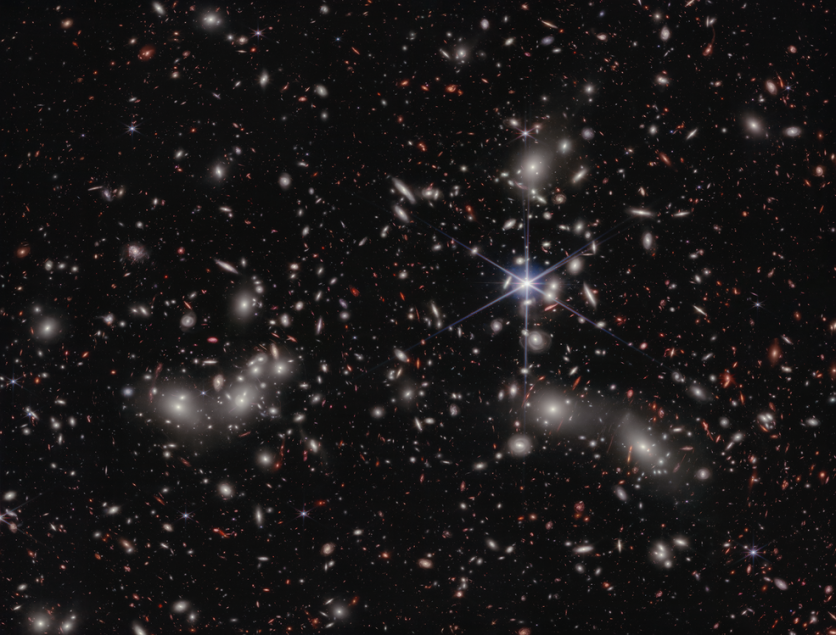Astronomers unveiled the most recent deep field image from NASA's James Webb Space Telescope, highlighting previously hidden details in a bright massive region of space called Pandora's Cluster (Abell 2744). Webb captured three huge clusters of galaxies merging to become a megacluster.
By acting as a natural magnifying glass, the galaxy clusters' combined mass produces a strong gravitational lens that makes it possible for Webb to detect distant galaxies in the early universe.

Ancient Myth of Pandora
NASA's Hubble Space Telescope has only explored Pandora's central core in detail before but now, astronomers combined Webb's potent infrared detectors with a wide mosaic view of the region's sites of lensing to develop a deep field image that would advance the study of galaxy evolution.
"The ancient myth of Pandora is about human curiosity and discoveries that delineate the past from the future, which I think is a fitting connection to the new realms of the universe Webb is opening up, including this deep-field image of Pandora's Cluster," Rachel Bezanson, an astronomer from the University of Pittsburgh in Pennsylvania, said in a statement.
The appearance of distant galaxies is altered by gravitational lensing in addition to magnification, making them appear very different from those in the foreground, according to NASA.
The "lens" created by the galaxy cluster is so large that it warps the very fabric of space, causing light from distant galaxies to seem twisted as it passes across the warped view.
The cluster was photographed by the Ultradeep NIRSpec and NIRCam ObserVations before the Epoch of Reionization" (UNCOVER) team using Webb's Near-Infrared Camera (NIRCam) over around 30 hours of observation.
Follow-up Observations
The next step for the team is to carefully review the imaging data and choose galaxies for follow-up observation with the Near-Infrared Spectrograph (NIRSpec), which will provide accurate distance measurements.
The lensed galaxies' compositions will also be investigated in detail, offering fresh perspectives on the early stages of galaxy assembly and evolution.
These NIRSpec observations are anticipated to be made by the UNCOVER team in the summer of 2023.
The UNCOVER team used Webb photometry from JWST-GO-2561, JWST-DD-ERS-1324, and JWST-DD-2756 in conjunction with publically available Hubble data to create the imaging mosaics and catalog of sources on Pandora's Cluster.
ⓒ 2025 TECHTIMES.com All rights reserved. Do not reproduce without permission.




